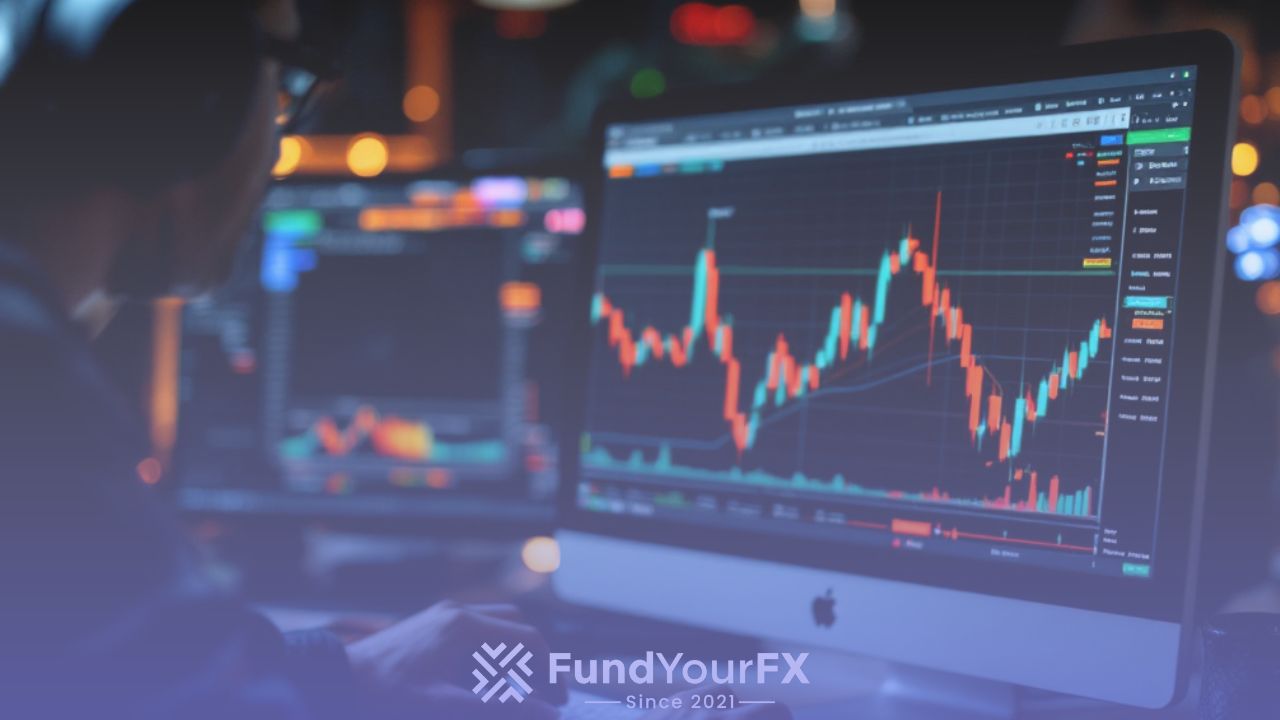Congratulations on earning a funded Forex account! That achievement puts you miles ahead of many aspiring traders. But as you may know, the real challenge often starts after you get funded. Maintaining your account and steadily increasing its size calls for discipline, consistency, and a clear strategy.
In this guide, I’ll break down seven effective steps that successful Forex traders use to protect their capital and pursue steady growth in a funded environment. Whether you’re just starting with a funded program like FundYourFX or looking to level up, these tips will help you build (and keep) a thriving trading account.
1. Prioritize a Clear, Rules-Based Trading Plan
A lot of traders begin their journey with a loosely defined plan. It might work in a demo environment or on small personal accounts, but in a funded setting—where firm rules and drawdown limits can be strict—you need precision.
- Define Your Strategy: If you haven’t already, jot down exactly how you plan to enter and exit trades. Is it based on specific candlestick patterns, moving averages, or fundamental analysis?
- Stick to Risk Parameters: Keep your risk per trade consistent (often 1-2% of your balance). This helps you avoid emotional rollercoasters if trades don’t immediately go your way.
- Set Realistic Goals: Identify what a “successful” trading day or week looks like in terms of pips gained, percentage returns, or risk-reward ratios.
When your rules are crystal-clear, you’re less likely to make impulsive decisions that can compromise your funded status.
2. Master the Art of Risk Management
If you’ve heard the phrase “protect your downside,” it’s for good reason. Risk management can be the deciding factor between keeping your funded account and watching it slip away.
- Use Stop-Losses Religiously: Placing stop-loss orders might feel restrictive, but it’s essential for limiting large drawdowns—especially in volatile markets.
- Manage Trade Size: Instead of risking random amounts, use consistent position sizing based on your comfort level and account balance. Even if you hit a losing streak, your overall capital remains relatively safe.
- Keep an Eye on Correlation: Be cautious about stacking multiple positions in highly correlated currency pairs (like EUR/USD and USD/CHF). If one goes south, the others might follow suit, compounding potential losses.
Over the long run, these practices help you stay in the game—and scaling becomes a lot smoother when you don’t have to constantly recover from big drawdowns.
3. Refine Your Trading Psychology
It’s one thing to have a plan on paper, but sticking to it when the market gets choppy can be emotionally challenging. That’s where trading psychology comes in.
- Know Your Triggers: Take note of situations that make you stressed or overly excited. Do you revenge-trade after a loss? Do you close winning trades too early out of fear? Self-awareness is the first step.
- Develop a Mindfulness Habit: A brief pause—whether it’s a short meditation, deep breathing, or a quick walk—can help reset your mind and keep you from making knee-jerk decisions.
- Set Realistic Expectations: You won’t double your account every week. A healthy mindset acknowledges that small, consistent gains add up over time—and usually outlast quick but risky spikes.
Traders who put in the effort to manage their emotions often notice a major improvement in their win rate and longevity, especially in funded environments where consistency is everything.
4. Hone Your Technical Analysis Skills
You can have all the discipline in the world, but if your technical setups are weak, it’s hard to see strong results. Sharpening your chart-reading abilities is crucial:
- Focus on Key Levels: Support and resistance zones tend to influence price movement more than random pivot points. Keep them marked on your charts.
- Use Indicators Wisely: Moving averages (like 50-day or 200-day) can help identify trends, while oscillators (such as RSI) might signal potential overbought or oversold conditions. Just don’t go overboard with too many indicators at once—clarity is key.
- Combine Price Action with Indicators: Watching candlestick patterns near important moving averages or Fibonacci retracements can give you a more complete picture than either method alone.
In many cases, it’s the simple, time-tested technical concepts that deliver the best results—provided you apply them consistently.
5. Diversify Your Trading Approach
Diversification isn’t just for long-term investors. In the world of funded trading, putting all your eggs in one strategy basket can be risky.
- Trade Multiple Pairs: Rather than focusing solely on EUR/USD, consider adding pairs like GBP/USD, USD/JPY, or AUD/USD to balance exposure.
- Mix Different Timeframes: If you’re a day trader, it might help to hold a few swing trades based on longer timeframes. This way, one tough day won’t derail your entire week.
- Adapt to Market Conditions: In times of low volatility, scalping might be more effective than waiting for giant swing moves. When the market is on the move, you can shift back to a trend-following approach.
A diverse approach smooths out your equity curve, reducing the chance of big drawdowns caused by a single strategy underperforming.
6. Keep a Detailed Trading Journal
Traders who document their progress often end up learning faster and making better decisions. Yet it’s easy to skip journaling when you’re in the thick of the action.
- Record Your Entries and Exits: Capture screenshots of your charts whenever you enter and exit, noting why you took the trade and how it turned out.
- Track Emotional Factors: Were you anxious? Overconfident? Sometimes your mental state influences the outcome just as much as market conditions do.
- Review Weekly or Monthly: Spot patterns—both good and bad—in your trading. Maybe you notice you’re more successful on certain pairs or during specific market sessions. Use that data to refine your strategy.
Over time, your journal can become an invaluable roadmap, guiding you toward what truly works and what habits you need to ditch.
7. Scale Up Gradually and Responsibly
Once you see consistent wins, it’s tempting to ramp up your lot sizes or jump into more trades. But going too big, too fast can be your downfall—especially in a funded environment with firm rules.
- Increase Position Size Slowly: A small bump in lot size after a run of profitable trades is safer than doubling it overnight.
- Stick to Firm Drawdown Rules: No matter how tempting it is to “go all in,” you don’t want to risk losing access to your funded account because you hit a drawdown threshold.
- Lock In Milestones: Many funded programs, including FundYourFX, have tiered models where they increase your capital as you meet performance targets. Meet one goal at a time, and enjoy each victory before moving on to the next.
Patience isn’t just a virtue—it’s a strategic asset that helps you safeguard your progress and grow your account without undue stress.
Final Thoughts
Maintaining and scaling a funded Forex trading account isn’t about hitting home runs on every trade. It’s about discipline, risk control, and consistency—qualities that endear you to any prop firm looking for traders who can keep accounts in good standing. Stick to a structured plan, nurture the right mindset, and pay attention to the data you gather in your trading journal. Over time, you’ll likely see the account—and your confidence—grow.
Ready to take your trading career to the next level? FundYourFX offers a range of programs designed to help dedicated traders refine their skills and manage meaningful capital. If you’re looking for a reliable path to funded trading success, it’s worth exploring all that FundYourFX has to offer.
Next Steps and Additional Resources
- Check out our Funding Programs: Funding Programs
- Explore Risk Management Tools: Download free calculators and templates for position sizing.
- Join Our Trader Community: Engage with fellow traders, share insights, and get feedback on your trades.







